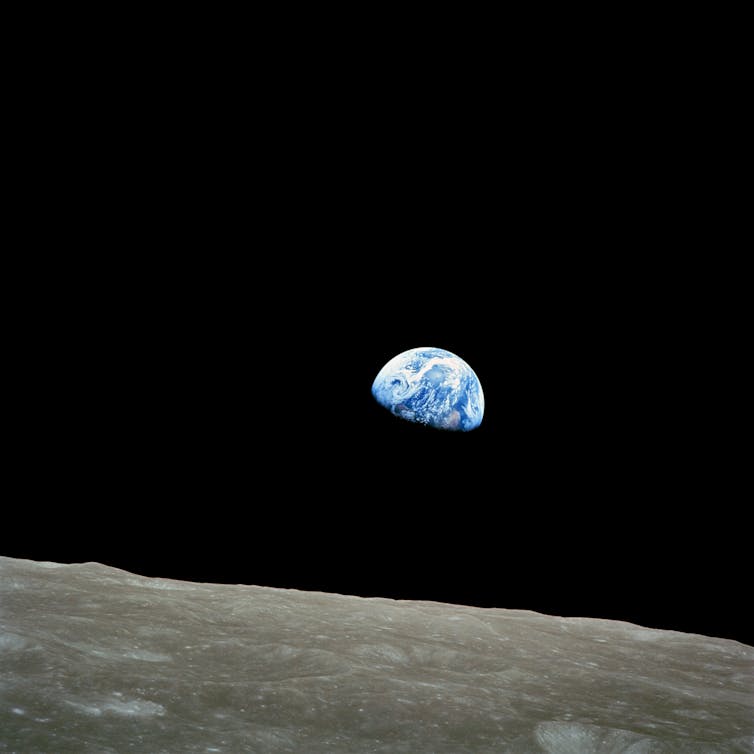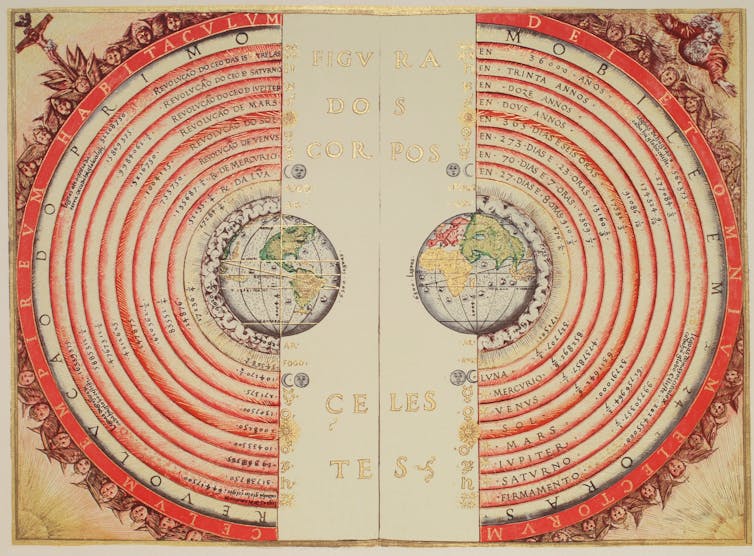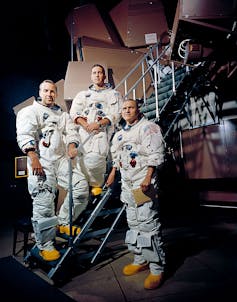 |
| Earth seen from the Moon (NASA) |
Apollo 8 is the space mission for the humanities, if ever there was one: this was the moment that humanity realised a dream conceived in our cultural imagination over two millennia ago. And like that first imagined journey into space, Apollo 8 also changed our moral perspective on the world forever.
In the first century BC, Roman statesman and philosopher Marcus Tullius Cicero penned a fictional dream attributed to the Roman general Scipio Aemilianus. The soldier is taken up into the sphere of distant stars to gaze back towards the Earth from the furthest reaches of the cosmos:
And as I surveyed them from this point, all the other heavenly bodies appeared to be glorious and wonderful — now the stars were such as we have never seen from this earth; and such was the magnitude of them all as we have never dreamed; and the least of them all was that planet, which farthest from the heavenly sphere and nearest to our earth, was shining with borrowed light, but the spheres of the stars easily surpassed the earth in magnitude — already the earth itself appeared to me so small, that it grieved me to think of our empire, with which we cover but a point, as it were, of its surface.
Earth-centric
Even for those of us who are familiar with the ancient and medieval Earth-centred cosmology, with its concentric celestial spheres of sun, moon, planets and finally the stars wheeling around us in splendid eternal rotation, this comes as a shock. For the diagrams that illustrate pre-modern accounts of cosmology invariably show the Earth occupying a fair fraction of the entire universe. |
| The geocentric model. Bartolomeu Velho, 1568 (Bibliothèque Nationale, Paris). Wikimedia Commons |
Cicero, and Macrobius after him, make two intrinsically-linked deductions. Today we would say that the first belongs to science, the second to the humanities, but, for ancient writers, knowledge was not so artificially fragmented. In Cicero’s text, Scipio first observes that the Earth recedes from this distance to a small sphere hardly distinguishable from a point. Second, he reflects that what we please to call great power is, on the scale of the cosmos, insignificant. Scipio’s companion remarks:
The vision of the Earth, hanging small and lowly in the vastness of space, generated an inversion of values for Cicero; a human humility. This also occurred in the case of the three astronauts of Apollo 8.I see, that you are even now regarding the abode and habitation of mankind. And if this appears to you as insignificant as it really is, you will always look up to these celestial things and you won’t worry about those of men. For what renown among men, or what glory worth the seeking, can you acquire?
A change in perspective
There is a vast difference between lunar and Earth orbit – the destination of all earlier space missions. “Space” is not far away. The international space station orbits, as most manned missions, a mere 250 miles above our heads. We could drive that distance in half a day. The Earth fills half the sky from there, as it does for us on the ground. |
| Apollo 8 crew-members: James Lovell Jr., William Anders, Frank Borman (L-R). NASA |
So it was that, as their spacecraft emerged from the far side of its satellite, and they saw the Earth slowly rise over the bleak and barren horizon, the crew grabbed all cameras to hand and shot the now iconic “Earthrise” pictures that are arguably the great cultural legacy of the Apollo program. Intoning the first verses from the Book of Genesis as their Christmas message to Earth – “… and the Earth was without form, and void, and darkness was upon the face of the deep…” – was their way of sharing the new questions that this perspective urges. As Lovell put it in an interview this year:
The 20th century realisation of Scipio’s first century BC vision also energised the early stirrings of the environmental movement. When we have seen the fragility and unique compactness of our home in the universe, we know that we have one duty of care, and just one chance.But suddenly, when you get out there and see the Earth as it really is, and when you realise that the Earth is only one of nine planets and it’s a mere speck in the Milky Way galaxy, and it’s lost to oblivion in the universe — I mean, we’re a nothing as far as the universe goes, or even our galaxy. So, you have to say, ‘Gee, how did I get here? Why am I here?’
Space is the destiny of our imagination, and always has been, but Earth is our precious dwelling place. Cicero’s Dream, as well as its realisation in 1968, remind the world, fresh from the Poland climate talks, that what we do with our dreams today will affect generations to come.
About Today's Contributor:
Tom McLeish, Professor of Natural Philosophy in the Department of Physics, University of York
This article is republished from The Conversation under a Creative Commons license.
Space And NASA Related Stories:
- To Celebrate NASA's 60th Anniversary, Monaco Will Host US Astronauts, Aerospace Experts, and the Screening of "Above and Beyond: NASA's Journey to Tomorrow"
- First Man: A New Vision Of The Apollo 11 Mission To Set Foot On The Moon
- Astronaut Sally K. Ride's Legacy – Encouraging Young Women To Embrace Science And Engineering
